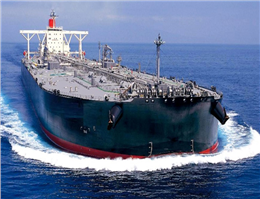China’s One Belt, One Road Project May Hit Tanker Demand
A NUMBER of projects under China’s One Belt, One Road initiative, which aims to stimulate economic growth and trade, are likely to cast a long shadow over the tanker market.

China’s One Belt, One Road Project May Hit Tanker Demand
A NUMBER of projects under China’s One Belt, One Road initiative, which aims to stimulate economic growth and trade, are likely to cast a long shadow over the tanker market.
According to MANA, recent report by transport consultancy Poten & Partners said some projects, such as the Myanmar to China crude oil pipeline and the proposal for a canal across the Kra Isthmus in Thailand, would reduce tonne miles for tankers by shortening shipping distances.
The most important project to have a direct effect on the tanker industry is the Myanmar-China pipeline, which is designed as an alternative route for China to receive crude oil from the Middle East and Africa. It would avoid having to ship oil through the Malacca Straits into the South China Sea.
The 479-mile pipeline is designed to carry more than 400,000 barrels per day from Ma Day Island Oil Terminal on the west coast of Myanmar to Kunming in China’s Yunnan Province, where PetroChina has a 260,000 bpd refinery.
The monthly volume received by the Myanmar terminal has gradually increased since it was officially launched in April. It is on track to reach 6m barrels this month.
In parallel to this development, Poten & Partners noted the vessels calling at the terminals were growing in size, with suezmaxes gradually being replaced by very large crude carriers.
Another project that shows the ambitions of the OBOR initiative is the proposal for a canal across the Kra Isthmus in Thailand.
Like the Myanmar to China pipeline, the Thai canal would provide an alternative to shipping through the Malacca Straits and shorten the distance for oil shipments to Japan and China by about 650 nautical miles.
Although the proposal has been discarded several times owing to high costs and environmental concerns, the canal would reduce tonne miles for tanker shipping if it ever gets built, Poten & Partners said.
There are also several energy and transport projects in the Middle East that China has invested in or is planning to, including refining projects and pipelines.
Chinese investment dollars are also committed to various projects in South-east Asia, such as a refinery in Indonesia and a deep-water port in Vietnam.
On the surface, Asia needs infrastructure and OBOR fills part of that need. In reality, though, this might reduce tanker tonne-mile demand and have an effect on long-haul rates, Poten & Partners concluded.